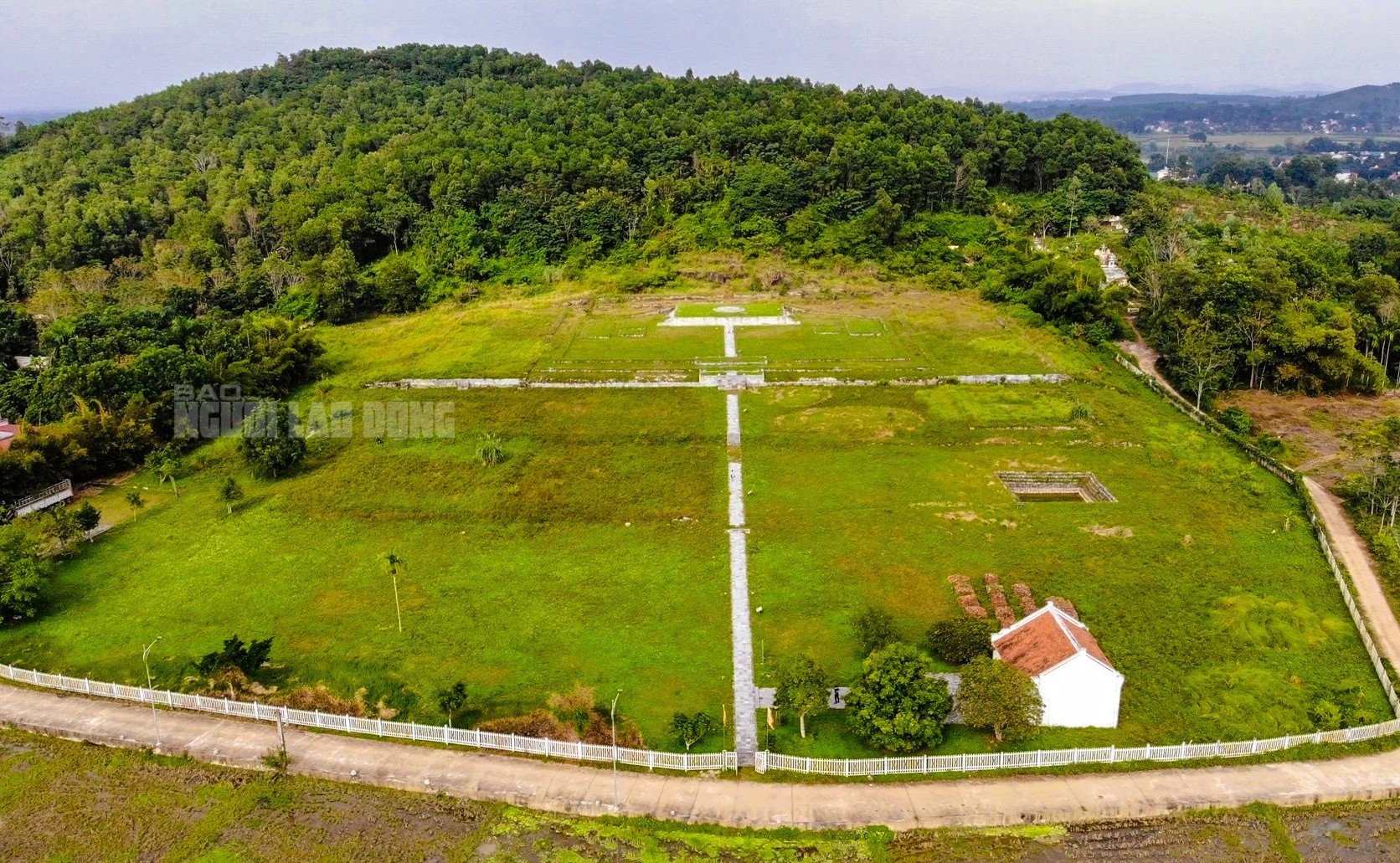On November 11, speaking with Nguoi Lao Dong Newspaper, Mr. Trinh Huu Anh, Deputy Director of the Ho Dynasty Citadel Heritage Conservation Center (Tay Do commune, Thanh Hoa province), said that the Ministry of Culture, Sports and Tourism (VH-TT-DL) has decided to allow the center to coordinate archaeological excavation at the Nam Giao Altar - an ancient altar structure more than 600 years old in the Ho Dynasty Citadel world heritage complex.

Nam Giao Altar - an ancient altar over 600 years old in Ho Dynasty Citadel
According to Mr. Trinh Huu Anh, the center will coordinate with the Institute of Archaeology to excavate an area of 9,909 m2, including 94 holes in two areas of foundation 4 and foundation 5 - locations considered important in the overall architecture of the Nam Giao Altar. The excavation time is from the end of 2025 to July 2026.
The Ministry of Culture, Sports and Tourism requires that during the excavation process, authorized units must protect the original state of the strata, relics, antiquities and the site; at the same time, make plans and progress in accordance with approved goals and solutions. Discovered relics and antiquities will be protected on site, scientifically edited and reported to the Ministry of Culture, Sports and Tourism for consideration of conservation plans. In cases where long-term preservation is required, they will be temporarily imported to local public museums.
"The expansion of the overall excavation of the Nam Giao Altar area is expected to provide more scientific arguments, contributing to the overall restoration of the Ho Dynasty's sky worship ritual, an important ritual," said Mr. Huu Anh.

King's Well, one of the important items discovered at Nam Giao Altar
The altar is located in the ancient Cao Mat commune, now Vinh Loc commune, Thanh Hoa province, about 2.5 km southeast of Ho Dynasty Citadel (Tay Do commune), about 45 km northwest of Hac Thanh ward (Thanh Hoa province center) along National Highway 45.
The Nam Giao Altar was first excavated in 2004. Up to now, scientists have conducted 4 explorations and excavations with a total area of 18,000 m2, initially clearly identifying the architectural characteristics of the Nam Giao Altar: Back against Don Son mountain, facing Nam Giao field, the structure consists of 5 rectangular bases facing the South - expressing the ancient concept of "round sky, square earth".
In 1990, the historical and cultural relic cluster including Tran Khat Chan Temple, Giang Pagoda (Tuong Van Tu), Gio Pagoda (Nhan Lo) and Nam Giao Altar were recognized as provincial relics. In October 2007, Nam Giao Altar was recognized as a national archaeological relic.

World Heritage Ho Dynasty Citadel in Tay Do commune, Thanh Hoa province
According to the Ho Dynasty Citadel World Heritage Conservation Center, this excavation not only has scientific and cultural significance, but also concretizes the strategic commitment between Thanh Hoa Provincial People's Committee and UNESCO in the work of preserving and promoting the value of the Ho Dynasty Citadel World Heritage.
According to documents from the Ho Dynasty Citadel World Heritage Conservation Center, in the year Canh Thin (1400), after ascending the throne, Ho Quy Ly established the Ho Dynasty with the capital Tay Do (also called Tay Giai) to distinguish it from Dong Do (Thang Long, Hanoi). After 2 years of ascending the throne, Ho Quy Ly abdicated to his second son Ho Han Thuong (in 1402). As soon as he ascended the throne, this king ordered his mandarins to build the Nam Giao altar.
Every year, the Ho Dynasty held a ceremony to worship heaven and earth, pray for national peace and prosperity, or on occasions of general amnesty at the Nam Giao altar. The word "Giao" means a ceremony to worship heaven in the south of the capital. This ceremony is often called the Nam Giao ceremony, and the place where it is performed is called the Nam Giao altar.
However, after only 7 years of existence (1400-1407), the Ho Dynasty collapsed when Ho Quy Ly and Ho Han Thuong were captured by the Ming invaders in 1407. Although it had the shortest existence in the feudal history of Vietnam, the Ho Dynasty left behind a massive stone citadel, the most unique in Southeast Asia. In 2011, this unique stone citadel recognized by the United Nations Educational , Scientific and Cultural Organization ( UNESCO) as a world cultural heritage .
Source: https://nld.com.vn/khai-quat-dan-te-co-hon-600-nam-cua-trieu-dai-ngan-nhat-viet-nam-196251111092548025.htm



![[Photo] Prime Minister Pham Minh Chinh receives Lao Minister of Labor and Welfare Phosay Sayasone](https://vphoto.vietnam.vn/thumb/1200x675/vietnam/resource/IMAGE/2025/11/11/1762872028311_dsc-2246-jpg.webp)



![[Photo] Chu Noodles - the essence of rice and sunshine](https://vphoto.vietnam.vn/thumb/1200x675/vietnam/resource/IMAGE/2025/11/11/1762846220477_ndo_tl_7-jpg.webp)




























































































![Dong Nai OCOP transition: [Article 3] Linking tourism with OCOP product consumption](https://vphoto.vietnam.vn/thumb/402x226/vietnam/resource/IMAGE/2025/11/10/1762739199309_1324-2740-7_n-162543_981.jpeg)








Comment (0)